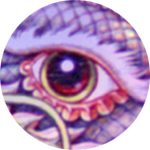This was from the thread on learning multiple forms but I wanted to start a new thread to discuss this in more depth
This is the problem I had while I was training Songshan shaolin. My main system is choy lay fut and there is a set of concepts that form the frame of the entire system. The core concepts make training the system very focused and direct in terms of what type of skills you are trying to achieve. we have for instance the 10 elements which are 10 types of striking that form the basis for all other striking.No one has yet organised Shaolin into a Logical syllabus. So at the moment, in order to learn the style well, you really do have to practice a lot of forms. Or have an extremely good teacher who teaches you all the principles well.
CLF 10 elements with the chinese characters
http://www.youtube.com/watch?v=uuTBbKucwdI
Does Songshan Shaolin have a directly applicable set of core concepts like this? I was never taught them and my (at the time of my training) my chinese/instructors english was too limited to really ask also I was unable to identify them. Perhaps someone with more expierence can explain and help me understand better





 Reply With Quote
Reply With Quote





